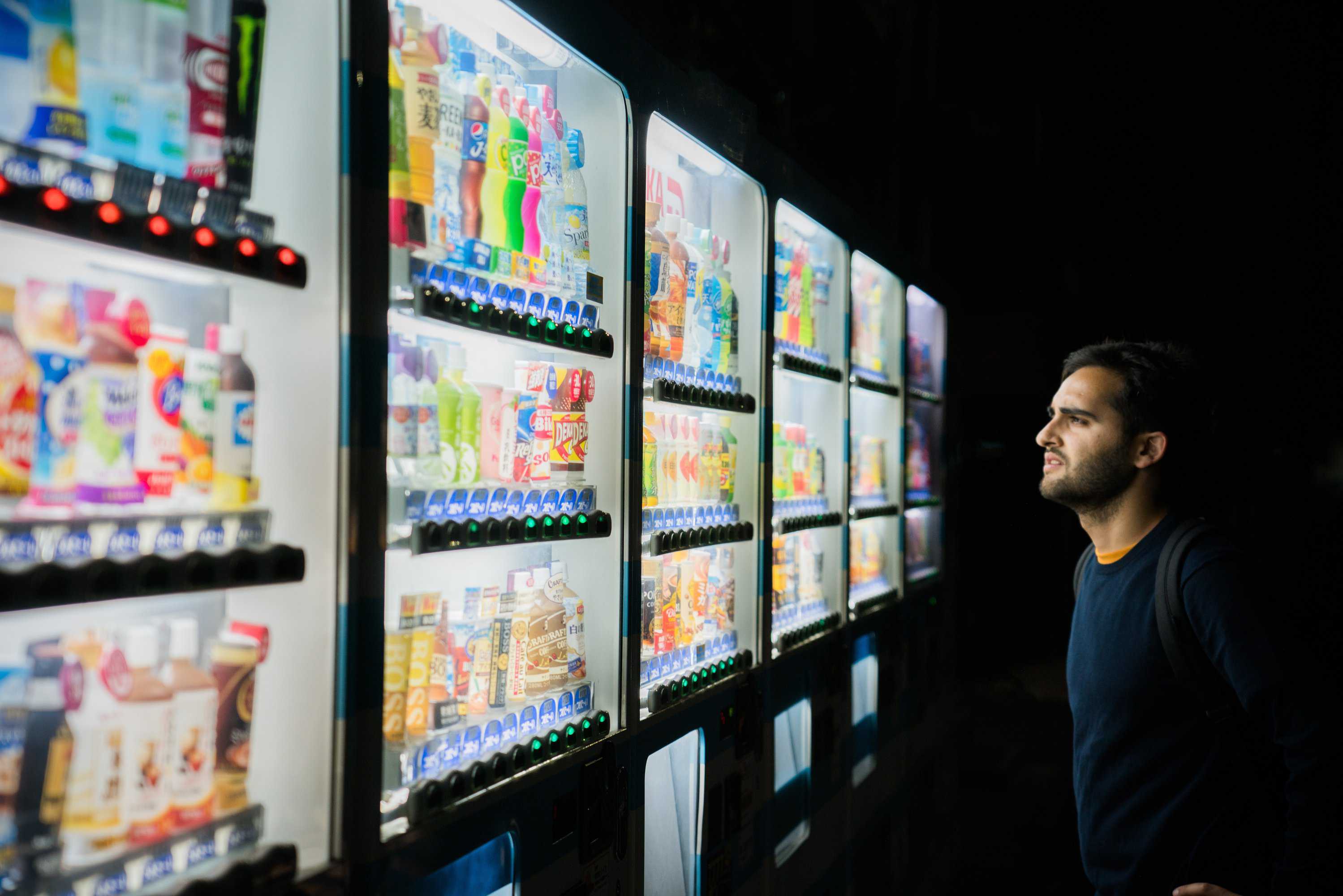As you wander through the cities of Japan, you’ll encounter stunning landscapes, breathtaking shrines, some of the world’s very best cuisine — and a dizzying array of vending machines.
That’s right. Japan happens to have the highest density worldwide of vending machines, with one for every 23 people. Selling everything from surgical masks and puppies (designed more like a pet store than a soda can dispenser) to canned bread and hamburgers, these machines, pronounced “jidouhanbaiki” or “jihanki” in Japanese, are more abundant in Japan than sushi restaurants.
Some context: The world’s first vending machine was introduced in 215 BCE in Ancient Egypt. It dispensed holy water in a temple in Alexandria when a coin was dropped in a slot. The first in Japan, however, dates back to 1888, and sold cigarettes. And times have not changed much, since; the vast majority of vending machines today do the same, along with beverages — hot, cold, alcoholic or soft drinks. In fact, today some Japanese vending machines use facial recognition software to guess the user’s age and gender to offer a personalized drink recommendation.
But why are vending machines so ubiquitous in Japan?
First, the country’s population boom after World War II offered vendors an easy and inexpensive way to reach customers with their product, giving them seamless access to goods. Also, vending machines require much less labor than a restaurant or shop, and don’t take up as much space, so they are cheaper to own and operate in an increasingly expensive real estate market.
The vending machine concept was not always marked by innovation, either. For years, Japan’s low crime rate (one of the lowest in the world) has made it possible for sellers to place their products at unattended food stalls, trusting buyers to leave exact change for fruits and vegetables left out for sale. That harmonious environment is hospitable for vending machines too — they are rarely vandalized in Japan.
Vending machines are also a common way companies advertise specific products. Wrapped in brightly colored imagery, the company’s logo front and center, they draw the attention of potential customers. They can also garner publicity: A vending machine selling bras made headlines in 2013, for example, when unveiled at a branded specialty shop in Shibuya. Attracting mixed reactions, only seven pieces were sold in the first month.
Of course, this isn’t the strangest product sold in a vending machine, from flying fish to hot corn soup, the options are endless. The locations can also be unexpected, including Buddhist temples and Shinto shrines, where amulets and fortune-telling paper strips may be purchased with a handful of coins.
“It’s less that vending machines are so popular, and more that they are interwoven into Japanese society,” writes blogger Brian Ashcraft. “Japanese people are not surprised the country has so many vending machines. They are surprised that other countries don’t.”

